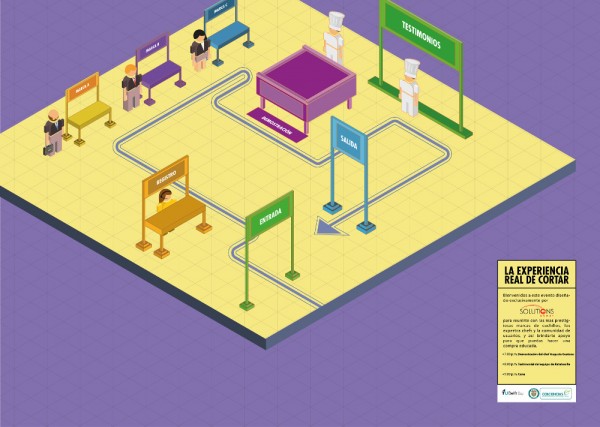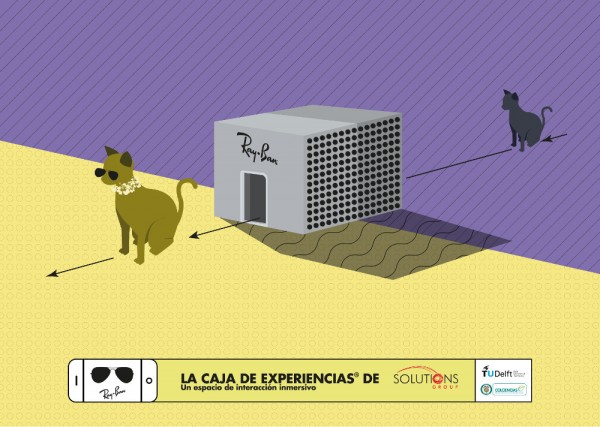Blog
How will we shop in 2025? the design of a vision concept to explore the future of Solutions Group
- Problem owner: Solutions Group
- Process owners: design students: JetteBloemberg, Elisa Engelsma, Francesca Zuurhout, Eva Oosterlaken, Maite Gieskes, and Jamie Ongkiehong (Honors Program Bachelor of Industrial Design Engineering – PO3 – TU Delft); and design coach: Ricardo Mejia (ID Studiolab, TUDelft).
-
Place & Completion Date: The Netherlands, January 2016.
Challenge
Solutions Group is a Colombian company that design, produce, and install point-of-purchase advertising displays. With 13 years in the market, providing more than 150 jobs, the company has been essential for the economic and social development of Funza, a small town near to Bogota, Colombia, where its facilities are located. As many other SMEs, Solutions Group is facing a constant dilemma, it has to act according to the current situation and need to be ready for the future. However, most of the SMEs, including Solutions Group, focus almost exclusively on short-term problems and they do not have enough skills to explore the future. As a result, they have less potential for innovation and competitiveness.
To solve this concern I developed DIVE, a design futures technique that consolidates the lessons from my previous research on the application of vision concepts (e.g. concept cars in the automotive industry) as a speculative design technique in large corporations. See more of my investigation on Concept cars as a design-led futures technique here and Vision concepts within the landscape of design research here.
The goal of this project is then to design a vision concept to explore a preferable future of the shopping experience, which can inspire new ideas for Solutions Group.
Method: DIVE, vision concepts as a design futures technique, for SMEs
DIVE guides designers through the design of vision concepts with SMEs representatives, helping them to innovate. It displays an agile, inexpensive, and hands-on activities to explore and communicate a preferable future. You can download DIVE here.
Two groups of honors students have identified context factors, envisioned an image of the future, defined a strategic direction, created a vision concept and made a prototype and a video to communicate this concept to significant stakeholders.
Results
The two groups developed two complementary concepts, (i) the Real Experience, and (ii) the Experience Box, both focus on the value of the customer experience in 2025.
Here you can find a short report of each case:
(i) the Real Experience
(ii) the Experience Box
The real experience
The experience box
Javier Ricardo Mejia Sarmiento



